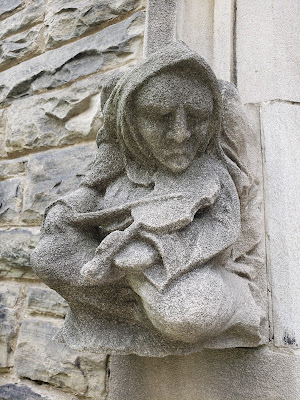Despite its relatively young age compared to old-world cities, Toronto has managed to build up an architectural landscape boasting some surprising variety. Though the city's built form is becoming dominated by glass towers, earlier periods brought architectural opulence to the skyline in a different form.
A now-dying art, elaborately carved masonry details define some of Toronto's best-known landmarks. It was a common way for grand buildings to distinguish themselves as late as the early 20th century, when modern construction and design principles began to limit the demand for skilled stonemasons.
Their work lives on in buildings — and in some cases, ruins — around the city, much of it either hidden away in the details or faded into obscurity over the passing decades.
But one anonymous architecture enthusiast wants it all to be rediscovered, creating a comprehensive map with roughly 175 entries of the gargoyles and grotesques that adorn early Toronto buildings.
the map's densest concentration of gargoyles and grotesques can be found in the city centre, with isolated pockets further out in neighbourhoods like High Park, The Junction, and The Beaches.
Looking at the map will tell you where to find these carved bits of history, but it won't tell you much about them.
- Artist Duane Linklater initiated the Don Valley Park Art Program with a striking installation of cast replicas of gargoyles adorning prominent Toronto buildings: Monsters for Beauty, Permanence and Individuality
- For other information on Toronto grotesques, take a look at Terry Murray's Faces on Places: A Grotesque Tour of Toronto (2007).




